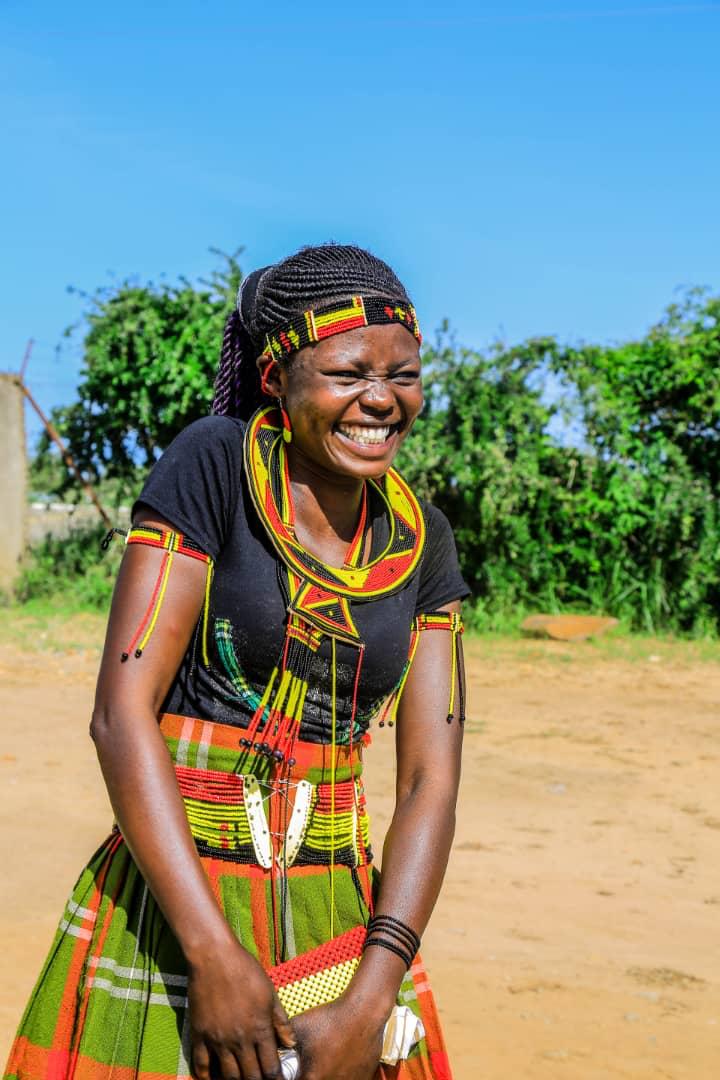
“Our culture has remained static while the world around us evolves. We, therefore, need to unlearn and denounce negative practices like forced marriage, communal sleeping, wife inheritance and the belief that the woman is property. We need to learn new practices that will prevent the spread of HIV/AIDs.” Mr Uma Charles, Kotido District Chairperson said.
Uma Charles and several others shared similar sentiments during the recently concluded KARUNA Leadership Forums run in 7 districts across Karamoja. These forums were held to provide a platform for dialogue between the district leaders, elders and young people on issues of Sexual Reproductive Health and HIV/AIDS prevention for and by young people in Karamoja. These leadership forums were run under the Karamoja United Nations HIV Prevention Programme (KARUNA) that is aimed at reducing new infections among 10-24-year-olds in Karamoja by 2020. Launched in 2016, It is being implemented in 7 districts namely; Kotido, Abim, Napak, Kaboong, Moroto, Nakapiripirit and Amudat.
Over a decade ago, the prevalence in the region was significantly lower than the rest of Uganda. It stood at only 1.7% in 2000,Uganda AIDS Indicator Survey (UAIS). However, this has changed very quickly over the last 19 years. As Uganda’s HIV prevalence continues to drop, the prevalence in Karamoja is slowly on the rise. According to the 2017 Uganda Population-Based HIV Impact Assessment (UPHIA 2017), the prevalence of HIV in Karamoja has risen from 3.4% to 3.7% in just a short span between 2011 and 2017. With these stats in mind, it is important to revisit our strategies to reduce new HIV infections, especially among young people in a society still so deeply rooted in culture.
Cultural values in Karamoja continue to hold steady regardless of external influences. These beliefs and behaviour have a great influence on the spread of HIV/AIDS within Karamoja. We often forget that culture is one of many factors that influence human behaviour. Practices like widow inheritance, forced child marriages, communal sleeping where girls as young as 12 sleep in a dormitory setting away from their families and courtship rape are an avenue through which HIV can be spread. Not forgetting the culture of poverty that forces young people to engage in early and non-protected sex for survival.
Women are still considered property once dowry is paid. When a man dies, the clan considers it right that his brother inherits his wife since they own her. This practice is one of the key ways in which the virus is spread. Children are becoming wives and mothers through forced marriages and courtship rape. Community Sleeping which leaves young girls vulnerable also remains common in many parts of Karamoja. Without the protection of their communities, young girls who sleep in this “dormitory” setting are taken advantage of. These are just a few of the practices that predispose Karimojong to HIV infection.
While these practices mentioned are retrogressive and can fuel HIV Transmission, Karamoja has a wealth of cultural and traditional practices that meaningful, tested and can have a positive impact on their quality of life. We need to use and tag onto positive culturally acceptable norms to prevent the spread of HIV within the Karamoja region. For a region so firmly rooted in their culture, maybe it’s this culture that will save them from this HIV scourge. During our interaction with Karamoja Elders Association (KEA) at the KARUNA Leadership Forums. They shared passionately on the good cultural practices in Karamoja that can combat the spread of HIV within the region.
“I acknowledge that as a culture, we have practices and traditions that make our men and women vulnerable to HIV. However, there are also cultural factors we can utilize to influence the prevention of HIV/AIDS.” said Angella .J. Adomi, a member of the Karamoja Elder’s Association (KEA) adding that “Karamoja had some good cultural practices like the fireplace where the parents sat with their children to advise and mentor them. We need to go back to this style of social dialogue to be able to groom our children. It is in safe spaces like this that we can have conversations on HIV/AIDS prevention freely and openly.”
We have seen this social dialogue work effectively while implementing the KARUNA program where we found creative ways to use these strong cultural values for HIV prevention and awareness. Our Focus Group Discussion approach borrows from the “fireplace” tradition as shared with us by the Karamoja Elders Association members.
These discussions allow for social dialogue between young people and their communities. It is at these gatherings that HIV/AIDs prevention information and tools are disseminated. From these discussions, we have also worked with the youth champions to organise debates which are also another avenue to share ideas and seek solutions.
This direction of implementation of the KARUNA program has come with many lessons. When developing interventions for this region, we need to tap into Karamoja’s existing positive cultural aspects. Karamoja does not need a one-size- fits- all approach. Replicating interventions that have worked in other regions may not work. There is a need to tailor make interventions in collaboration with the Karamajong community.
Your Reaction